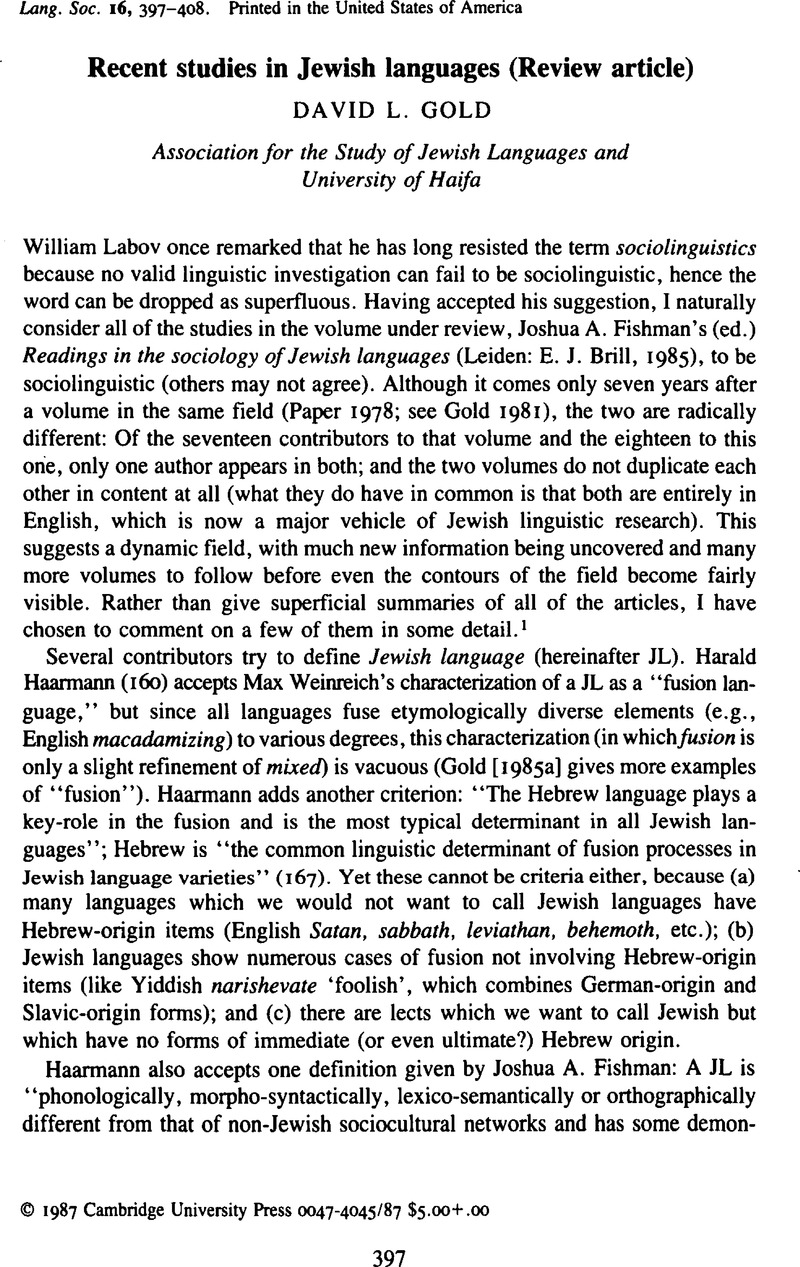Crossref Citations
This article has been cited by the following publications. This list is generated based on data provided by Crossref.
Gold, David L.
1989.
A sketch of the linguistic situation in Israel today.
Language in Society,
Vol. 18,
Issue. 3,
p.
361.



